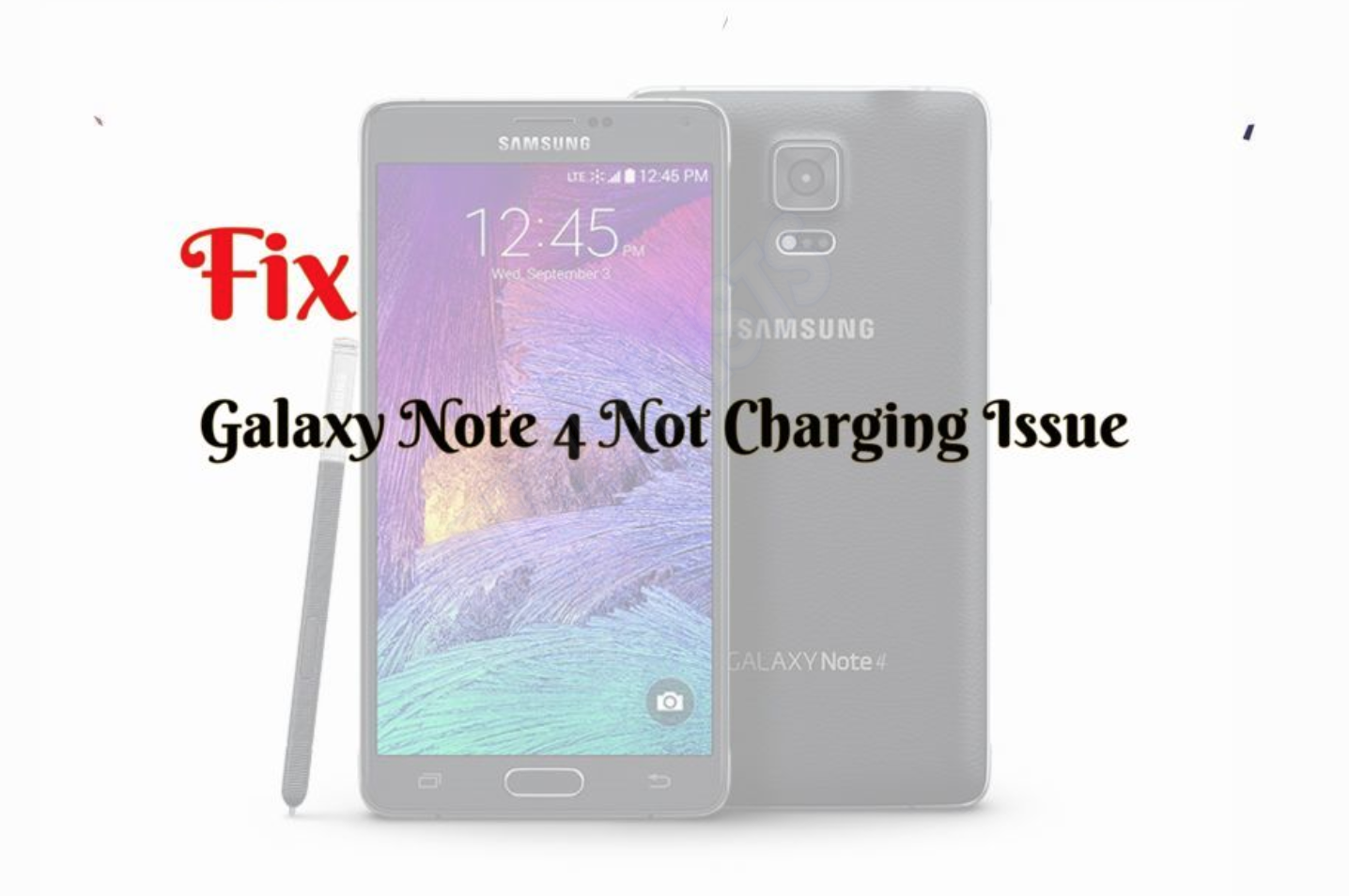Those who still own Samsung Galaxy Note 4 and they are facing battery problems. This is the place you should be, Here you will learn how to Fix Samsung Galaxy Note 4 Not Charging Issue. We have covered this same issues on different devices and we did fix them.
Samsung Galaxy Note 4 was the game changer device for the Galaxy Note series. Galaxy Note 4 came out with the plethora of features that won’t let you get your hands off from Galaxy Note 4. The best and new thing was the design, it was way better than all the previous Note series.
When it comes to specs, Galaxy Note 4 was rocking with Exynos 5433 8-core system chip running at up to 1.9GHz, 3GB of RAM and a plentiful 32GB. Moreover, this device was powered up by Quad HD, 5.7-inch 1440 x 2560-pixel display. To sum it up in one word, Samsung Galaxy Note 4 was the device at that time.

Contents
Fix Samsung Galaxy Note 4 Not Charging Issue:
In this post, We’ll provide you with all the potential solutions to Fix Galaxy Note 4 Not Charging problem. You can use all the following workaround one by one. Keep that in mind, if none of the following worked for you then, the only solution is the Samsung Service Center.
Use the correct charger:
In order to get the best battery timing, you should always use the original charger that came with the box. Now you’ll be wondering why? because not all other chargers have the same voltage ratings required to charge the Galaxy Note 4.
If you don’t have the original charger, then you should buy a new certified charger from the Samsung outlets.
Read more:
- Update Qualcomm Galaxy Note 4 to Android 8.1 Oreo via Resurrection Remix.
- Install Latest TWRP Recovery On Samsung Galaxy Note 4 [Exynos & Qualcomm – All Variants].
- Fix Samsung Galaxy Note 4 problems after Marshmallow update.
- Samsung Galaxy Note 4 random reboot issue, other issues.
- Galaxy Note 4 Lag In Sending Text Messages Issue and more problems.
Try charging the phone while it’s powered off:
This is the so far best solution to both not charging and slow charging issues. You’ll get an idea if your firmware is behind all this or it is a hardware issue. If your device is charging as it used to do, it’s most likely a firmware issue. However, it can be background apps. Sometimes there are just too many apps running in the background and because of that, your device starts slow charging.
Now if your device won’t charge even if it’s turned off, that can be a signal of hardware problem. But still, it can be a system crash.
Inspect the power adapter:
This is the first thing every smartphone user should so when their device is not charging. Use the same USB Cable with other devices. Make sure it’s not bent or broken. Also, use the same adapter to charge other devices, If it works on other devices then it must be the adapter behind all this. You can always buy a new one. Make sure the new charger must be certified by Samsung, So you won’t be facing the Galaxy Note 4 Not Charging problem.
Verify the USB cable isn’t broken: This is really important, check your USB cable, sometimes it’s broken but we can’t see it. Connect other devices with the same cable, start pressing the cable from various points to see is there any bump etc.
Check Which app is causing not charging issue:
- To check this you have to perform the following steps.
- First, Press and hold the power key.
- Now when you see the ‘Samsung Galaxy Note 4’ logo on the screen, release the power and hold Volume down key.
- Don’t let go the volume down key until your device finishes rebooting.
- When you see Safe mode in the bottom left corner of your screen, release the volume down button.
Now you’ll be in safe mode and all of your third-party apps will be temporarily disabled, now plug-in the charger. If your device starts charging normally as it used to do, that means some third party app was causing this issue.
Perform a Factory Reset:
You need to create a complete backup of your device before you perform a Factory Reset. [ How to Backup Your Entire Android Device to PC ].
- Turn off your device.
- Now press and hold home+Power+Volume Up key.
- Release the power button once you see the logo, but keep holding home and Volume up keys.
- Now when you see Android logo, let go both buttons.
- Use the volume down button to navigate and highlight wipe data/factory reset.
- Now use the power key to select the option.
- You have to select ‘Yes‘ when you’ll be prompted for the next menu.
- Now wait for the process to be completed, once it’s done highlight ‘Reboot system now’ and press power button to select it.
- All Done.
Clear System Cache:
- Turn off your device.
- Now press and hold home+Power+Volume Up key.
- Release the power button once you see a logo, but keep holding home and Volume up keys.
- Now when you see Android logo, let go both buttons.
- Use the volume down button to navigate and highlight wipe cache partition.
- Now use the power key to select the option.
- You have to select ‘Yes‘ when you’ll be prompted to the next menu.
- Now wait for the process to be completed, once it’s done highlight ‘Reboot system now’ and press power button to select it.
- All Done.
If none of this worked for you then there is no doubt that your device is facing hardware issues. The best solution is to go to the nearest Samsung service center and let them fix it for you.











